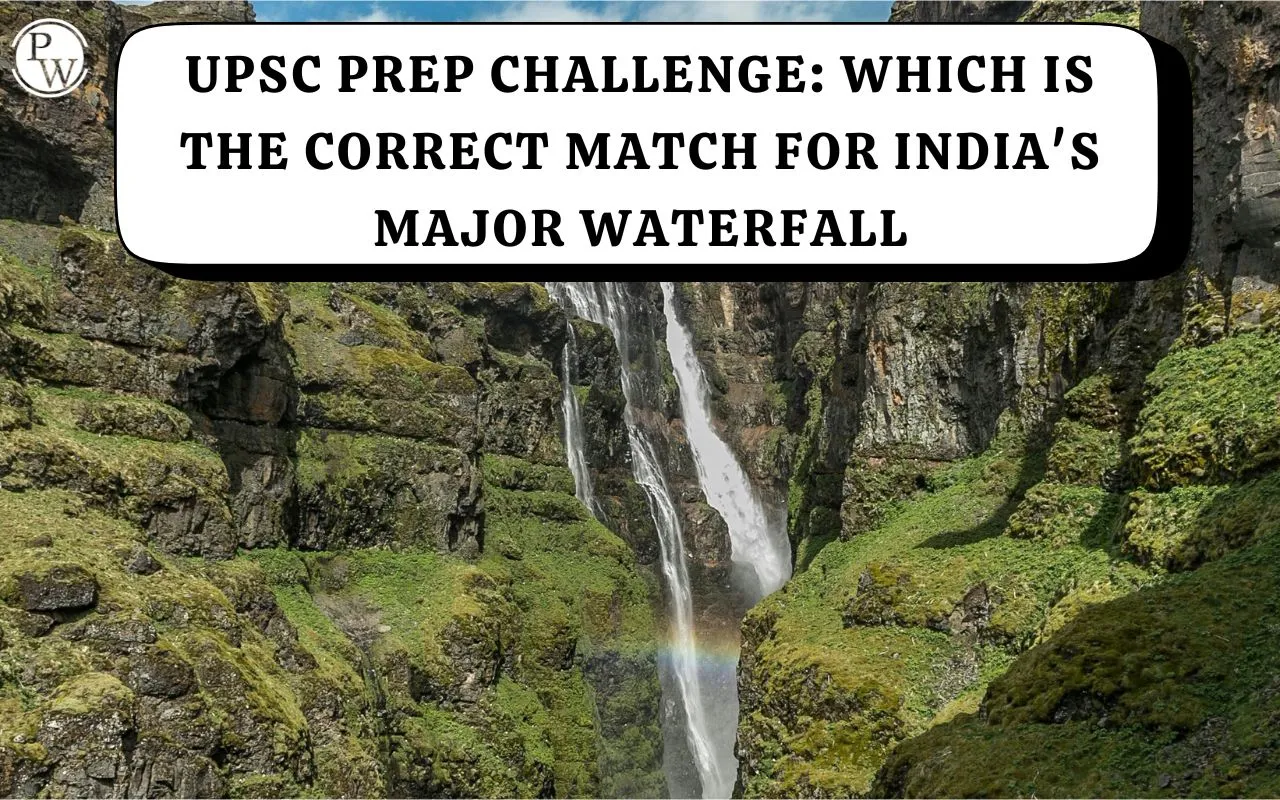

For geography enthusiasts and Civil Service aspirants, understanding the intricate relationship between India’s rivers, their geological regions, and the majestic waterfalls they create is crucial. The recent UPSC General Studies Paper-I included a direct match-the-following question that tested this very knowledge, focusing on three prominent waterfalls: Dhuandhar, Hundru, and Gersoppa.
This question highlights the sheer diversity of India’s landscape, where cascades are born from vastly different hydro-geological settings—from the ancient, mineral-rich highlands of the East to the steep, rain-fed escarpments of the West.
Here is the correct geographical pairing for these three wonders:
1. Dhuandhar Falls: The "Smoke Cascade"
-
Region: The Malwa Plateau (near Jabalpur, Madhya Pradesh).
-
River: The Narmada River.
The Dhuandhar Falls, literally translating to "Smoke Cascade," earn their name from the massive spray generated as the powerful Narmada River plunges 30 meters into the famous Marble Rocks gorge. The Narmada, being one of India's major West-flowing rivers, defines the regional geography, draining the northern slope of the Satpura Range.
2. Hundru Falls: The Chota Nagpur Jewel
-
Region: The Chota Nagpur Plateau (Jharkhand).
-
River: The Subarnarekha River.
Located just outside Ranchi, the Hundru Falls are one of the highest in the state, falling from a height of 98 meters. The Chota Nagpur Plateau is known for its dendritic drainage pattern and steep river gradients, which allow rivers like the Subarnarekha (meaning "streak of gold") to create such dramatic drops, making the region a haven for waterfalls.
3. Gersoppa Falls: The Pride of the Western Ghats
-
Region: The Western Ghats (Karnataka).
-
River: The Sharavathi River (often incorrectly referred to as Gersoppa/Netravati in older contexts).
Also popularly known as the Jog Falls , this is the second-highest plunge waterfall in India. The Western Ghats, an official UNESCO World Heritage Site, are characterized by their high rainfall and sudden, steep descent towards the West Coast. The Sharavathi River capitalizes on this topography to create the stunning, four-tiered cascade of the Jog Falls, a defining feature of Karnataka's ecology and tourism.
Mastering these connections is more than just memorizing facts; it’s about appreciating how India’s geology and hydrology shape its magnificent natural heritage.
